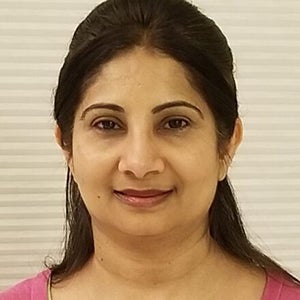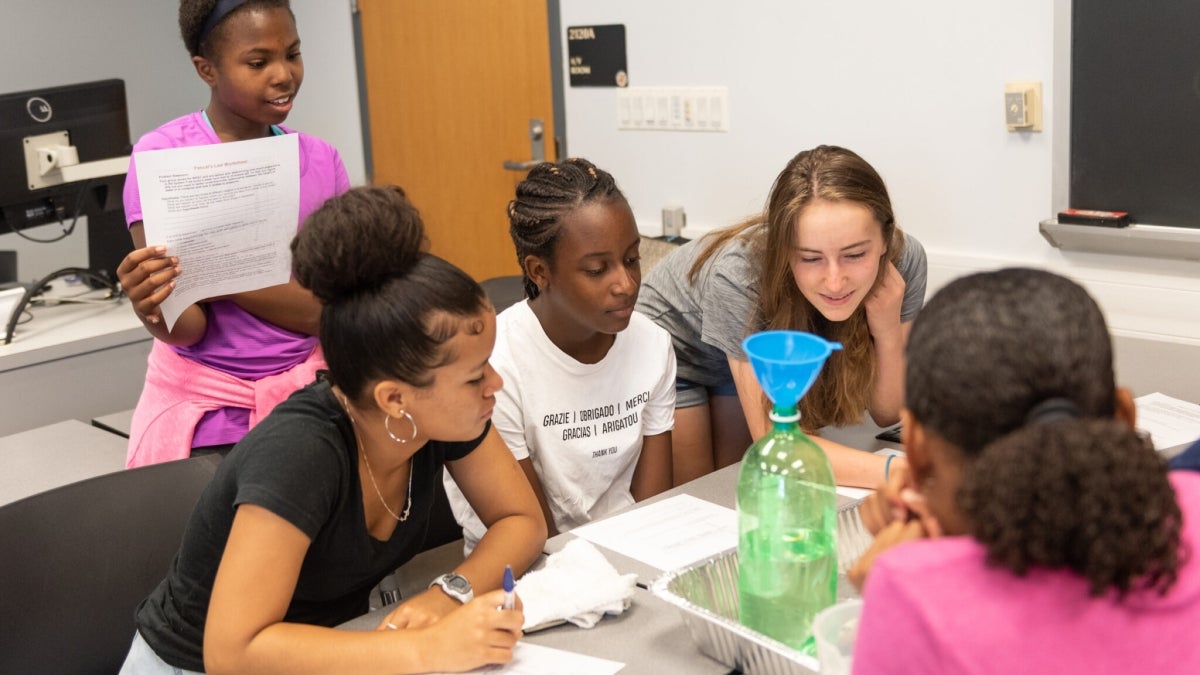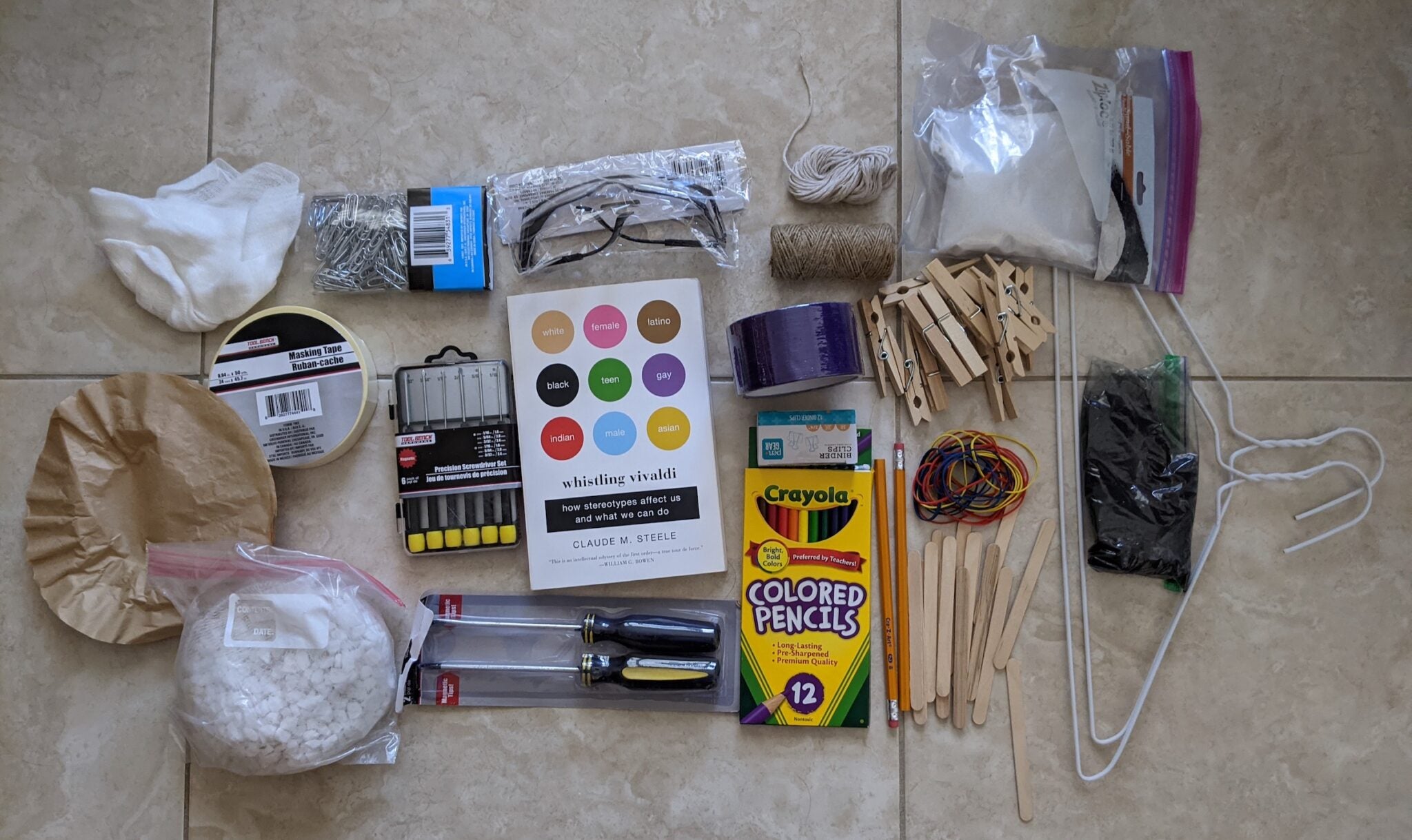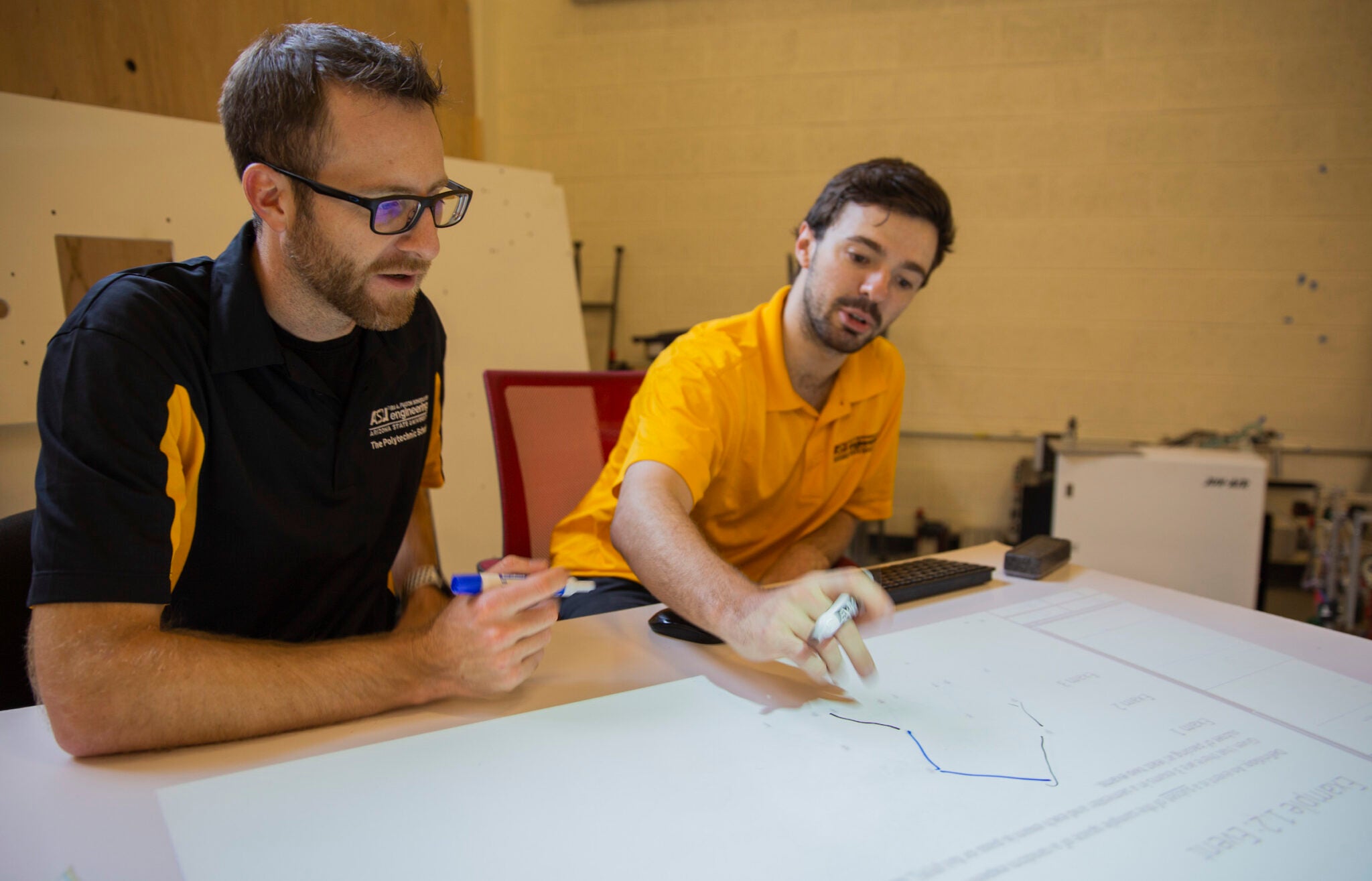Medha Dalal had a master’s degree in computer science from New York University and a job as a software engineer in the U.S. when she decided to return home to India to be closer to her family. The move meant taking a teaching position at an engineering college. It was supposed to be a temporary detour on her career path.
Instead, Dalal said, “I fell in love with it. I was super excited to be with students. I loved every aspect of the profession. That’s when I decided I’m not going back to industry. I decided to make education my new career.”
That is what led Dalal back to the U.S., where she would earn a doctoral degree in education in 2019 in the learning, literacy and technologies program in Arizona State University’s Mary Lou Fulton Teachers College.
Dalal’s dissertation, which focused on “ways of thinking” to address engineering education challenges, landed her a postdoctoral position working with engineering education researchers in ASU’s Ira A. Fulton Schools of Engineering.
Fortuitously, those faculty researchers in The Polytechnic School, one of the six Fulton Schools, were revving up their efforts for Engineering for US All, also known as e4usa, a national pilot program supported by the National Science Foundation to develop an engineering course for high school students.
Showing high school students the value of engineering
The project aspires to much more than preparing high school students to study engineering in college, says Adam Carberry, a Fulton Schools associate professor of engineering education and a co-principal investigator on the e4usa project.

Medha Dalal, who has a postdoctoral position in the Fulton Schools engineering education program, is doing curriculum design and qualitative research for e4usa that involves assessing students’ experience in the program and teachers’ implementation of the curriculum. Photo courtesy of Medha Dalal
“Our overarching goal is to demystify and democratize engineering. We want to see a generation of young people who don’t think of engineering as an esoteric field, but something that can serve the very basic needs of their communities,” Carberry said.
Beyond giving students a big-picture view of engineering’s impacts on society, e4usa wants them to see how basic knowledge of the fundamentals of engineering can be applied to numerous other professional pursuits.
“Communication, teamwork and leadership skills, and especially problem-solving skills, can be learned through an understanding of engineering,” Carberry said.
It’s a generally accepted precept of the U.S. education system that all students should learn reading, writing, math and history. The e4usa leaders want to see introductory engineering lessons added to that list.
“It should be a core subject in high school,” said Darryll Pines, the president of the University of Maryland, a professor of aerospace engineering and e4usa’s principal investigator. He is adamant that the technological literacy and critical thinking that engineering can teach are essential to being successful in today’s world.
Pines and Carberry note that e4usa is among the programs the NSF highlights as one of its foremost workforce development endeavors.
Promoting diversity and equity in education
The ASU collaboration with e4usa started with a discussion at an American Society for Engineering Education conference between an NSF program manager, Pines and Professor Ann McKenna, who is the Fulton Schools vice dean of strategic advancement. They agreed to leverage ASU’s strengths and combine efforts to advance a proposal effort around e4usa. NSF funding was awarded in 2018.
McKenna said she sees the undertaking as “a meaningful way to increase diversity, equity and inclusion in engineering and the STEM fields, and to make it accessible to all,” including students who won’t become engineers.
“Maybe down the road those students become journalists or politicians, but something they learned about engineering will be valuable to them,” she said.
The project now led by the University of Maryland, ASU, Morgan State University, Vanderbilt University and Virginia Tech has partnerships with 13 other universities and 36 high schools around the country, including four in Arizona — and e4usa leaders hope to soon receive new NSF funding to support expansion of the project for at least several more years.
Recently, one of Dalal’s e4usa ideas won an ASU Knowledge Mobilization Spotlight grant, which recognizes innovative solutions to challenges in education posed by the COVID-19 pandemic. She compiled materials for mail-in design kits and conducted a virtual workshop for high school counselors to help them develop engineering literacy through hands-on engineering design experiences.
A presentation about the design kits and the workshop will be featured in ASU’s virtual display booth at the annual meeting of the American Association for the Advancement of Science in February, to be hosted by ASU.
Dalal is now co-leading e4usa’s qualitative research and is also involved in other components of the project, including curriculum design, student assessments and teacher professional development.
The research will examine students’ experience with the curriculum, teachers’ implementation of the curriculum in diverse classrooms and the overall intended educational outcomes.
Changing perceptions through broader perspectives
She also wants the project to make impacts in other ways. Like Carberry, Pines and McKenna, Dalal sees a need to alter the image of engineers from that of simply geeky technologists to creators and innovators.
Many young students, she said, “tend to think of engineers as workers who operate machines or work on computers in isolated cubicles. We have to show them the humanistic side of engineering, that all the technologies engineers make and use are about helping people.”
Dalal also wants to contribute to broadening the targets of that messaging to include various segments of the population.
“We have a lot of work to be done to reach out to students in underserved communities,” she said.
Stacy Klein-Gardner, the co-director of e4usa, agrees.
“We need more diversity among engineering students and also among engineering teachers,” said Klein-Gardner, an adjunct professor of biomedical engineering at Vanderbilt University who has also taught high school courses part time for more than 20 years.
The world will be better served if the people learning, teaching and doing engineering see their pursuits through the lens of their own life experiences in various socioeconomic circumstances and their understanding of the needs of people in those environments, Klein-Gardner says.
She points out that partnering with high schools in disparate communities isn’t the only way e4usa is trying to ingrain different perspectives into engineering education. In some schools, the project’s curriculum is being used by those who teach different subjects — including history and music.
Demonstrating impact of STEM fields on arts and culture
Richard Maxwell, who developed and leads the Creative Musical Arts and Sciences program at Arcadia High School in the Scottsdale Unified School District, began teaching the e4usa curriculum in 2019. He sees an integral connection between music, science, engineering and technology.
“I tell my students that most of what they see and hear in their lives, on recordings, TV, movies, videos and websites, is about engineering,” Maxwell said. “There’s no escaping it. I think of music today as a STEM subject.”
For e4usa curriculum assignments in which students construct their own instruments from common objects and materials, “they are essentially learning about engineering design and prototyping, along with some physics,” he said.
Aside from the technical elements and craftsmanship involved in making musical instruments, Maxwell asserts that engineering and science can also shape the experience of music from a cultural viewpoint.
What good engineering design can provide “produces the nuances and qualities of sound that make us listen to music, identify with it and connect to it emotionally,” Maxwell said.
Medha Dalal’s educational mail-in kits won an ASU Knowledge Mobilization Spotlight grant. Providing common materials such as clothes hangers, clothes pins, paper clips, string, pencils, duct tape, coffee filters, rubber bands and popsicle sticks, the kit enabled hands-on engineering design experiences. Photo courtesy of Medha Dalal/ASU
Lessons on how engineering boosts communities
At Mescalero Apache High School in New Mexico, e4usa-related studies began this year and are already having an impact, said Nate Raynor, a U.S. Air Force veteran who has been teaching science at the school for 12 years.
With impetus from the national program, Raynor is expanding the school’s robotics and computer science education. He also has students exploring local challenges with air and water quality — projects he can use to show them how engineering solutions can directly improve life in their community.
Raynor says he is also seeing a change in the mindset of the students who are becoming aware of the vast spectrum of science and engineering pursuits.
“They are beginning to see the possibilities of what could be out there for them in the world,” he said. “It is giving them a sense of what they might be able to do in their future that, historically, people here have never thought they could do.”
In addition to the Arcadia and Mescalero schools, Fulton Schools engineering faculty and staff are also bringing e4usa to GateWay Early College High School at Phoenix-based GateWay Community College, Ironwood High School in Peoria, Arizona, the Bagdad Unified School District in Bagdad, Arizona, and Sandia Preparatory School in Albuquerque, New Mexico.
The participation of those schools has been driven in large part by outreach led by Tooker Professor Tirupalavanam Ganesh, Fulton Schools assistant dean of engineering education and associate professor of research who studies, designs and implements development of learning environments for both K-12 and university education.
The e4usa enterprise has another engineering education expert and advocate to thank for its ascendance, says principal investigator Pines. His engineering colleague at the University of Maryland, Leigh Abts, has for decades led efforts to introduce engineering to high school students, particularly those in underserved communities.
“Without Leigh, we would not exist,” said Pines, who is confident the project will be steadily adding more university partners and seeing more high schools adopt its curriculum in the next few years.
Carberry, who leads ASU’s e4usa efforts, says the project is also taking steps to broaden the educational resources it can offer to high schools by expanding current collaborations or initiating new ones with industry, professional engineering societies, FIRST Robotics and TeachEngineering.
Adam Carberry (left) a Fulton Schools associate professor of engineering education, leads ASU’s Engineering for US All efforts. He expects the program to add to the educational resources it offers to high schools through increasing collaborations with industry leaders and professional engineering organizations. Carberry is pictured with engineering graduate student Mason Smith, who is using an interactive table he built to assist students with learning. Photo by Erika Gronek/ASU
Spotlighting innovation that bonds society
In addition to inspiring students to become our future engineers, or at least to appreciate the field’s importance, Dalal is energized by the opportunity that working with e4usa gives her to infuse “engineering literacy” into our everyday culture.
In the 2021 spring semester, she will teach the ASU 194 course, Engineering for Us All, which is open to students majoring in any field and will provide three general studies credits.
Dalal says the course will challenge students to take on roles as experts in various fields, including the humanities, arts and STEM fields, and to explore innovation and creativity in those areas through engineering design.
“Engineering touches our daily lives in simple, practical ways and also in very significant ways. Many of the things we do and the things we use are enabled by engineering,” Dalal said. “More awareness of this would make us better understand its value and maybe even strengthen our society’s common bonds.”
Top photo: In addition to its educational goals, the e4usa project is intended to help foster more diversity and equity in engineering and other STEM professions, and to promote more inclusion of members of communities that are largely unrepresented in those fields. Photo courtesy of e4usa
More Science and technology

Diagnosing data corruption
You are in your doctor’s office for your annual physical and you notice the change. This year, your doctor no longer has your health history in five-inch stack of paperwork fastened together with…
Large-scale study reveals true impact of ASU VR lab on science education
Students at Arizona State University love the Dreamscape Learn virtual reality biology experiences, and the intense engagement it creates is leading to higher grades and more persistence for biology…

ASU-led space telescope is ready to fly
The Star Planet Activity Research CubeSat, or SPARCS, a small space telescope that will monitor the flares and sunspot activity of low-mass stars, has now passed its pre-shipment review by NASA.…




